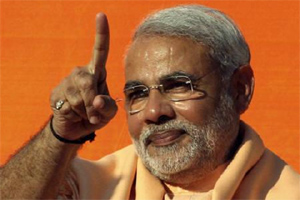Prime minister Narendra Modi is making major strides in energising India through solar power. During the UN conference on climate change held in Paris in 2015, Modi and the French president, Francois Hollande, launched International Solar Alliance, to be headquartered in India. The Modi government has also set a target of installing 100 GW of solar power by 2022, which seems ambitious given that the existing solar capacity is only 6.9 GW.
But nothing is impossible, and the best way to do that is to look at other countries’ experiences in this regard, their policies and how they are scaling up. It may also help India find suitable partners to achieve its targets.
By 2014, Germany had installed 38 GW, China 28 GW, and Japan 23 GW of solar power capacity. But normalising these numbers with per million population of those countries clearly shows that Germany, with 469 MW/million population, is way ahead of Japan (with 181 MW/million), and China (at 20 MW/million) population. India figures way below at just 2.32MW/million population. Incidentally, Germany also leads in absolute capacity installed, accounting for 21% of the 178 GW of total global solar installations in 2014.
But how did Germany become the leader? The primary role in this was played by Feed-in-Tariffs (FITs) and guaranteed priority grid connections to renewable energy producers, as embedded in \ (EEG) 2000 (Renewable Energy Sources Act). The renewable energy producers receive FITs, fixed per kWh for 20 years, which covers cost plus return on investment. The difference between FIT and average electricity prices is applied as EEG surcharge to consumers (except industrial consumers) as higher electricity bills, and not paid from public funds. This surcharge acted as a catalyst to unleash a sort of revolution such that by the end of 2013, 23% of global residential rooftop, and 37% of global commercial rooftop installations were in Germany.
Can such a policy nurture solar power in India? Interestingly, India has an FIT policy of sorts, but it is not mandated through priority grid access. It is left to the discretion of discoms/regulators. India has followed a policy of outright capital subsidy on solar panels/ plants, which has varied over time and from state to state as well as at the central level. Central Financial Assistance was initially 30%, but reduced to 15% in August 2015, and before being brought back to 30% in November 2015.
With fast reductions in costs of solar power, average bids from private sector have come down from Rs 6.8/kWh in 2014 to R5.6/kWh in 2015 (ICRA).
The lowest bid in 2016 is R4.34/kWh for solar park in Rajasthan. Even after accounting for 30% subsidy, it amounts to Rs 5.64/kWh. This is lower than cost of thermal power which was about Rs 5.93/kWh in 2013-14 (Planning Commission).
If India wants to unleash a revolution in solar power, the price at which governments should buy solar power for its grids should be the marginal costs of thermal plus at least 10-15%, which is the negative externality that thermal plants have in terms of pollution emitted and health costs. Once this is in place, one can quickly scale up to reach the target of 100 GW.
Radha Soami Satsang in Beas has already installed the largest rooftop system on a single roof in the world—11.5 MW. While campus requirements are met, the Satsang also has a 25-year pre-purchase agreement with Punjab State Power Corporation Limited to feed surplus into the grid. According to the ministry of new and renewable energy (MNRE), 22 ministries alone have rooftop solar capacity of about 7 GW.
Isn’t it time to lead by example? Haryana has already introduced mandatory rooftop solar installations for residential buildings, government and private educational, offices, private hospitals, nursing homes, malls, industrial and commercial establishments, hotels, banquet halls and tourist complexes meeting certain specifications.
Dhundi Saur Urja Utapadak Shahakari Mandali (DSUUM) in Gujarat which has a PPA with the state discom at R4.63/kWh to sell surplus power from solar pumps after meeting irrigation needs is another example. In March 2015, India had about 19,500 off grid solar pumps. During 2015-16, India installed 31,472 additional solar pumps, which is more than what it had done cumulatively till March 2015.
Gujarat is also looking at agro-policy whereby farmers can lease land to discoms for solar installations along with their crop cultivation and earn some income. Experiments in Japan, China, Garmany, UK, etc have revealed that solar panels can be put along farmers’ fields without adversely impacting photo-synthesis of crops. Such initiatives can help contribute to the government’s goal of doubling farm income by 2022 with added income coming from ‘harvesting from solar fields’. Both political will and public participation would play important roles. Farmer co-operatives, especially in areas that have low irrigation and cropping intensity, like Marathwada and Bundelkhand, are best suited to carry out pilots. But it would need upfront meeting of capital costs—this can come from organisations like Nabard or banks. It can be also done through corporate social responsibility or even from crowd-funding. International development organisations like GIZ of Germany, too, could enter the picture if one ties up with the Germans for expertise. Only a coordinated approach between the Centre, the states, corporate entities and civil society can help achieve the grid-connected target of 100 GW solar capacity.
Here lies a golden opportunity for Modi to kill two birds with one stone: Realise his dream of doubling farmers’ incomes by 2022 by enabling farmers to earn by harvesting solar energy from their own fields and feeding it into the grid as well as achieving the target of 100 GW of solar power. This would truly make India a leader of solar power generation. This would be more commendable when it is done by including the millions of small land-holders!
Gulati is Infosys chair professor for agriculture and Manchanda is research assistant, Icrier


